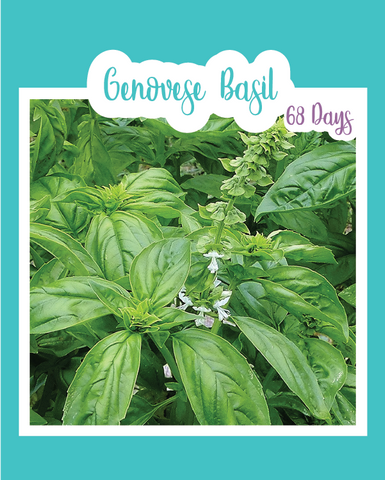
Greek Oregano
Seed Count: Approx. 150 seeds
Days to Maturity: Perennial
Description: Greek Oregano, which originally originates from the Mediterranean, has a strong aroma and flavor, and is great for flavoring pizzas, eggs, dressings, sauces, and pastas. It's coarse, oval, fuzzy, dark green leaves, resemble its cousin marjoram, and really packs a full flavored punch. This aromatic herb prefers areas with low humidity, so make sure you keep its foliage dry with good air circulation, if you're growing it in an area with high humidity. Oregano grows great in containers, and if planted in the ground, will make a lovely ground cover adorned with white flowers, that can reach almost 2 ft. in height when flowering, however, keep in mind that it can become invasive.
How To Grow
Sowing: You should start your oregano seeds 6-10 weeks before your last spring frost. Sow your seeds just below the surface of the soil. Be careful not to sow them too deeply. Keep the soil temperature around 65-70 degrees, and provide at least 6 hours of sunlight a day. Your seedlings should emerge in 10-21 days. Make sure to keep the soil moist when they appear. Transplant your plants, as soon as they grow big enough to handle or when frost is no longer a threat. When planting, space your seedlings about 12-15 inches apart. Once established, oregano thrives in fairly dry soil and full sun. To direct sow, plant your oregano seeds and thin seedlings to the strongest contenders to 12-15" apart, once they are big enough. As a companion plant, Oregano repels the harmful cabbage butterfly, so it's great to plant with cabbages and other members of the brassica family. This herb also grows great as a container plant, and is perfect for small patio or kitchen gardens. If you do not wish for your oregano to spread, growing it in a container may be the best option.
Growing: Oregano actually develops a more flavorful taste, if left alone, with minimal watering (about 1 inch per week) and no fertilization. Water your plants early in the morning, in order to prevent diseases. If you are going through a dry spell, it is important to keep your plants watered. However, once established, I found that they handled drought, and my laziness, pretty well. Mulching your plants can help conserve its moisture and keep weeds from taking over. Weeds compete for nutrients, space, and water so it is important to keep them minimized. For the best tasting leaves, keep your oregano tops pruned, to prevent flowering, plus it keeps the leaves tender.
Harvesting: Fresh leaves can be harvested as soon as the plant reaches 6 inches in height. The best time for harvesting oregano is in the morning, after the dew has dried. You can harvest entire stalks by cutting them and leaving at least 1 inch above the ground to allow for new growth. Fresh leaves should keep in the refrigerator for about 5 days, but they can also be frozen or dried. Because high heat tends to destroy the flavor of oregano, it should be added to hot food immediately before serving. Unlike most herbs, dried oregano tend to have a much stronger flavor than the fresh leaves, so I prefer to dry my oregano before using it. To save seeds, allow for your plant to flower and go to seed. Then harvest oregano seed heads, individually, as soon as they begin to turn brown and dry. If you allow them to dry in the garden, they will burst and reseed themselves. Spread seed heads out to finish drying, in a protected location, away from direct sunlight. Once dried, thresh out your seeds by rubbing or shaking the heads, and remove as much chaff as possible. You can store your oregano seeds in a cool, dry place for up to 1 year.




